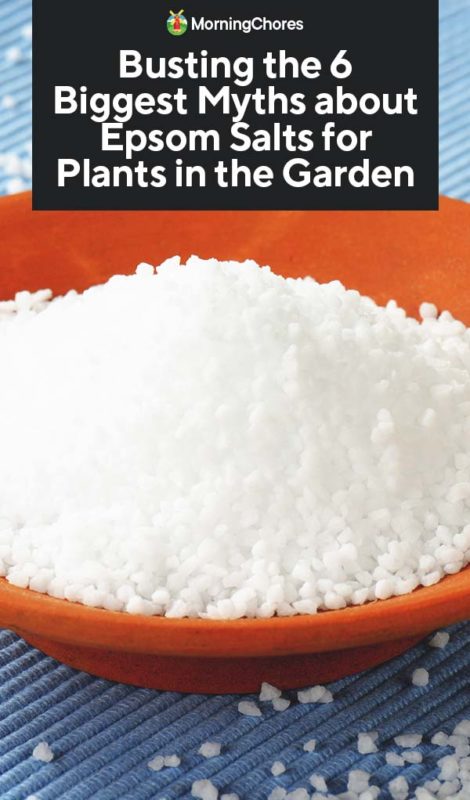Explore Why Some Plants Turn Down Epsom Salt as a Nutrient Source
In the detailed globe of plant nourishment, the rejection of Epsom salt as a feasible nutrient source by some plants positions a fascinating problem. The factors behind this discerning habits delve into a complex interaction of plant absorption systems, the one-of-a-kind chemical structure of Epsom salt, and plant-specific nutrient choices.
Plant Absorption Devices
In delving right into the elaborate realm of plant absorption devices, it becomes evident that the procedure is controlled by a sophisticated interplay of physiological dynamics and molecular paths. Plants soak up nutrients largely via their roots, using different transport systems to uptake vital aspects such as nitrogen, phosphorus, magnesium, and potassium. Magnesium, a vital component in chlorophyll synthesis and enzyme activation, plays an essential duty in plant growth and development.
The absorption of magnesium involves a number of actions, beginning with its accessibility in the soil option. When dissolved, magnesium ions are occupied by plant roots via details transportation healthy proteins installed in the cell membranes. These proteins assist in the motion of magnesium across the root cell wall surfaces and into the plant's vascular system, where it is after that distributed to various tissues to sustain numerous physiological features.
Comprehending the complex mechanisms behind magnesium absorption in plants loses light on exactly how this necessary nutrient adds to general plant health and performance. By maximizing magnesium uptake paths, growers can enhance crop returns and high quality, underscoring the value of comprehending plant absorption characteristics for sustainable agriculture techniques.
Epsom Salt Chemical Structure
The chemical structure of Epsom salt, additionally known as magnesium sulfate heptahydrate, exposes a distinct plan of components that contribute to its special residential properties and applications. The 7 water molecules are loosely bound to the magnesium sulfate compound, permitting it to liquify quickly in water and be readily taken up by plants via their roots.
The crystal structure of Epsom salt creates monoclinic prisms, which are extended crystals with parallel ends. This crystal shape affects the physical homes of Epsom salt, such as its appearance and solubility. Understanding the chemical structure of Epsom salt is vital for understanding its actions as a nutrient source and its interactions with plants in gardening and farming techniques.
Plant-Specific Nutrient Preferences
Plants show distinct preferences for specific nutrients, stressing the relevance of comprehending their individual needs for optimum development and development. Comprehending these plant-specific nutrient preferences is crucial for making the most of plant returns, improving decorative plant growth, and advertising overall plant health and wellness.

Plant-specific nutrient choices can additionally differ based on whether the plant is a monocot or dicot. Monocots, such as yards and lilies, have various nutrient requirements contrasted to dicots like roses and tomatoes. In addition, certain plants might exhibit particular shortages or toxicities when subjected to insufficient or excess levels of specific nutrients. By customizing nutrient supplements to satisfy the specific requirements of each plant species, growers can maximize plant growth, reduce nutrition waste, and support lasting farming practices.

Dirt Ph and Nutrient Uptake
Soil pH plays a critical duty in establishing the schedule of vital nutrients for plant uptake. Acidic soils with a lower pH are more information beneficial for plants like azaleas and blueberries, while alkaline dirts with a greater pH fit plants such as lavenders and clematis.
On the other hand, alkaline soils might restrict the availability of nutrients like zinc, copper, and iron, affecting plant growth. Preserving the appropriate pH degree in the dirt is necessary for guaranteeing that plants can efficiently uptake the essential nutrients for their healthy advancement and performance.
Hereditary Consider Nutrient Uptake
In the realm of plant nutrition, the interaction of genetic aspects dramatically influences the uptake of crucial nutrients essential for plant growth and advancement. Hereditary elements play an essential duty in shaping a plant's ability to take in and use nutrients successfully.
In addition, genetic elements likewise establish the efficiency of nutrient uptake mechanisms within plants. For example, some plants may possess genetic qualities that improve their capability to feed on nutrients from the dirt successfully, offering them a competitive advantage in nutrient-poor environments. On the other hand, genetic variants can also result in limitations in nutrient uptake, making sure plants more prone to shortages even when nutrients are abundant in the dirt.
Understanding how genetic elements influence nutrient uptake is important for creating approaches to enhance plant nourishment and enhance crop efficiency in numerous agricultural settings. By untangling the genetic systems included in nutrient uptake, scientists can function in the direction of creating genetically improved plant varieties with improved nutrition acquisition capacities.
Final Thought

In the elaborate globe of plant nourishment, the rejection of Epsom salt as a viable nutrient source by some plants postures an a fantastic read interesting quandary. what plants don't like epsom salt. Comprehending these plant-specific nutrient choices is crucial for optimizing crop returns, try these out boosting ornamental plant growth, and advertising overall plant health
By customizing nutrient supplements to satisfy the accurate demands of each plant species, farmers can enhance plant growth, decrease nutrient waste, and assistance sustainable agricultural practices.
In the world of plant nutrition, the interaction of genetic variables substantially influences the uptake of important nutrients important for plant growth and growth. Recognizing these intricacies in plant nutrient uptake is vital for optimizing plant development and health in agricultural methods.
Comments on “Gardening Tips: What Plants Don't Like Epsom Salt and Why”